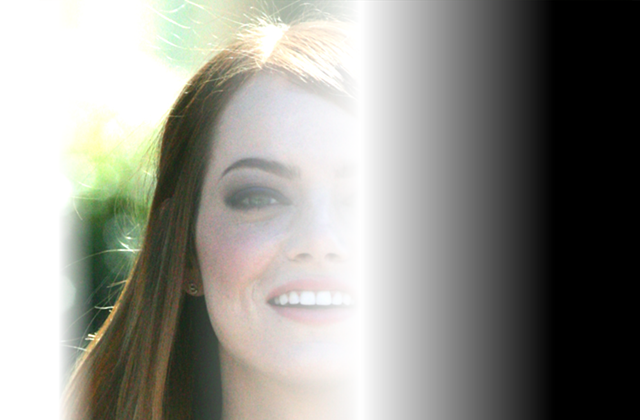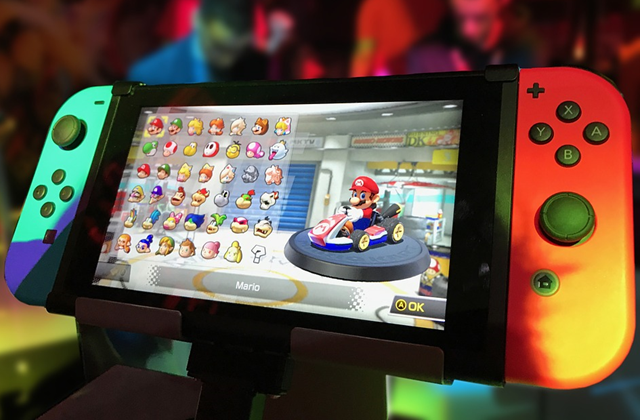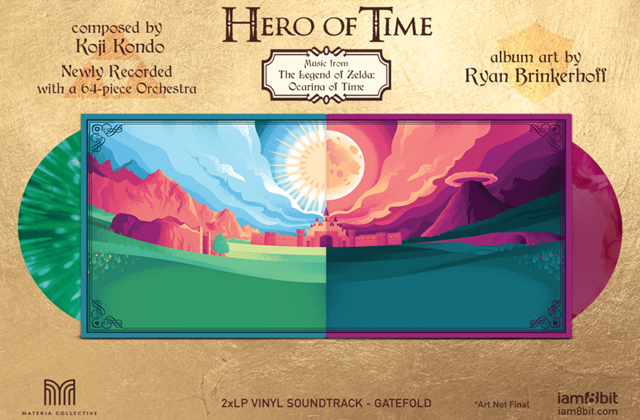Hollywood has increasingly of late, been under fire for its casting choices. Not necessarily the actors per se, but rather how the actor relates to the source material of the character in question. Particularly with respect to race and ethnicity.
With this has come claims of Hollywood whitewashing characters. Taking the source material, and then converting it into the idealised and westernised archetypical characters of white males and females.
So it’s not purely a case of apparent miscasting.
Such as Jack Black in King Kong (2005). Or Matthew Perry as Friends character Chandler Bing in any and every other role. Or Michael Cera always playing awkward male tween. Just look at their acting range.
Recent examples, include that of director Cameron Crowe issuing an apology over the casting choice of Emma Stone as Captain Allison Ng in the romantic comedy Aloha (2015). Notwithstanding the movie’s less than glowing reviews, that Crowe feels the need to explain the plausibility of Emma Stone depicting a character whose father was Chinese-Hawaiian and mother Swedish, may be in response to overreaction from moviegoers and commentators.
As Crowe wrote:
“Thank you so much for all the impassioned comments regarding the casting of the wonderful Emma Stone in the part of Allison Ng. I have heard your words and your disappointment, and I offer you a heart-felt apology to all who felt this was an odd or misguided casting choice. As far back as 2007, Captain Allison Ng was written to be a super-proud ¼ Hawaiian who was frustrated that, by all outward appearances, she looked nothing like one. A half-Chinese father was meant to show the surprising mix of cultures often prevalent in Hawaii. Extremely proud of her unlikely heritage, she feels personally compelled to over-explain every chance she gets. The character was based on a real-life, red-headed local who did just that.”
If the Captain Allison Ng character was based on a real-life redhead, and while Emma Stone is blonde in the movie, was the casting really that far from the mark?
Or, was it the presumption that because of the surname Ng the character and actor must appear Asian?
Associated with this, has come the continued fan outcry over the forthcoming live-action movie adaptation of the manga and anime Ghost in the Shell, with Scarlett Johansson staring as Motoko Kusanagi. Beyond it likely being a “Hollywoodised” version of the story, and despite Scarlett Johansson being a bankable movie star, the name Motoko Kusanagi is very much Japanese.
Yet, looking at the manga and anime character herself – which are frequently highly stylised – in the absence of her name, would she even be viewed as Japanese?
In which case, is Scarlett Johansson such a poor choice to play the cyborg, or must the character be portrayed by an Asian actress and preferably one of Japanese ethnicity?
Although, there is the other issue about staying true to the source material of Ghost in the Shell. Including that of the 1995 anime film. Concerns are the Hollywood version simply will not deliver; much like the Hollywood movie of Aeon Flux (2005) compared to the original anime.
Given the nudity of Motoko Kusanagi in the Ghost in the Shell series and Scarlett Johansson’s fairly consistent appearances in sexiest women in the world lists (even if she dropped off FHM’s list in 2015), is there hope of the same in the live-action film? In which case, will that silence some of the casting complaints or simply lead to others?
Then there’s also the male characters and actors angle. Quite apart from Hollywood being perceived to as too male-orientated.
Few people seemed to have had, or have, a problem with Samuel L. Jackson being cast as Nick Fury in the Marvel Cinematic Universe (MCU). Plus the character was updated in the comics and cartoons to reflect Jackson’s likeness; even if originally the Nick Fury character was a white male. Now it may be out of deference to Samuel L. Jackson, the man himself, that fans view him as just so damned cool, that if he’s cast as a character from comics then that’s a great thing irrespective. Possibly even better than David Hasselhoff as Nick Fury, who did look more like the original character in the comics.
The same cannot be said of the upcoming Fantastic Four (2015) movie, with actor Michael B. Jordan playing character Johnny Storm, the Human Torch. Here is a black man cast in the role of a white man, and some fans of the comic are none-too-happy about this. Obviously there’s an element of incongruity related to the source material with Johnny and Sue Storm being brother and sister, with white female actress Kate Mara playing Sue Storm. Unless it’s a bit like the case of these biracial twins. Fan disquiet may also relate to the perception of Fox’s handling of the Fantastic Four movies thus far, and the sense that the characters should be returned to the MCU. (Along with Marvel strategically choking off all content related to the X-Men and Fantastic Four, which Fox owns the movie rights to.)
It seems, particularly related to films based on comics, that Angry Fan Syndrome (AFS) is the recurrent communiqué of the moment on much of the internet.
Then there’s the touchy issue of the character James Bond. He’s been recast multiple times now, and granted each time it’s seldom without critique, but the suggestion of casting Idris Elba as the next James Bond has been incredibly divisive. Is the black actor too far removed from the character of the source material of the white Scottish secret agent? (Little mention of Idris Elba as Heimdall, the Norse god though.)
Although in that other stalwart of British franchising, Doctor Who, in the latest iteration with Peter Capaldi, the character of the Master is depicted as a woman played by actress Michelle Gomez. Very little negative mention was made of this changing of the source material, though that may be because it wasn’t the title character.
Is it that Hollywood is increasingly and truly whitewashing characters?
Or is it that such examples, are best viewed as Hollywood retelling the stories of elsewhere as though their own?
Much like a Bollywood film may cast Indian actors if retelling a story, perhaps regardless of the source material. And subject to actors and the financial realities of filmmaking.
Similarly films from South Korea, such as Oldboy (2003) have had their own Hollywood retellings and reimagined versions. In the case of the remade Oldboy (2013) the critique and criticism was of the film itself. Which appeared as an unwanted, inferior, and “Hollywoodised” version of the original. Many viewed it simply as an unnecessary remake. Sanitising much of the gritty, if nuanced, nature of the original film which made it a cult classic. Fans decried these things, rather than decrying it as yet another example of Hollywood whitewashing things and not casting Korean actors.
Likewise for other Hollywood versions of original non-American films.
Then, there are the plays of Shakespeare, which pretty much seem open slather as far as casting choices and interpretations of story goes. Provided the dialogue is not changed. Baring something such as Othello, no-one seems to get particularly bent out of shape regarding the race or ethnicity of actors portraying Shakespearian characters. Rather they judge the overall product and the actors’ portrayals. Which may be a product of the age of the source material. Hundreds of years have allowed things to mellow somewhat with respect to the race and ethnicity of the characters, to instead focus on the stories themselves.
Part of the fan uproar may have to do with preconceived notions.
Rightly or wrongly, surnames such as Ng and Kusanagi are presumed to be associated with an Asian, and not a Caucasian, appearance.
The race card and source material may also relate to the suspension of disbelief.
People are less able to sit back and simply enjoy a movie in the face of apparently glaring inconsistencies, especially when the character is nearly nothing like how they expected the character to be. Even if their expectations were fundamentally wrong.
Drawing another card from the race card deck, is the issue of blackface and others. Such as making a white actor out to appear black (or Asian, or some other race or ethnicity), through the use of make-up. Hollywood has a long history of this.
A rather notable example includes Mickey Rooney as the supposedly Asian-stereotype character, Mr I.Y. Yunioshi, in the Breakfast at Tiffany’s (1961) film.
Here, it can be an uneasy topic to approach: Should it be looked at in the context of the times; as comic relief; as offensively and blatantly racist?
Anything even remotely resembling blackface nowadays stirs a social medial storm. Such as Kylie Jenner photographed with black light and neon lights.
However, consider movies billed as comedies, such as the Wayans brothers’ White Chicks (2004) film. Which had the converse: black male actors made up to appear in the movie as white females. It wasn’t exactly a cinematic masterpiece, but it didn’t garner anywhere near the current level of outrage as the movie Aloha is getting.
Although the prevalence of social media has increased significantly since then.
Or consider Robert Downey Jr.’s character Kirk Lazarus in the comedy movie Tropic Thunder (2008). Kirk Lazarus was blatantly a blackface character. Yet instead of being viewed as racist, the whole thing was viewed and reviewed – rather favourably – as both an utterly farcical comedy and clever satire.
For that matter, in newer variations, even Enid Blyton’s stories of Noddy had the golliwogs replaced with goblins as the antagonists. So as to be politically correct and not be perceived as racist. Yet it was also argued that children did not make a connection between golliwogs and race (such as golliwogs being representative of black people); it was adults who had this preconceived notion.
Adam Sandler, funny or not, ran afoul with Native American jokes in his upcoming film The Ridiculous 6 (2015).
There are also issues related to how people even make references to race, when it comes to the use of colours. Black and white walk a fine line of apparently acceptable phrasing (and are technically shades), but anything else can too easily cross that line regardless of best intentions.
With the stories from Hollywood, the villains in movies have often been the perceived threat of the respective times the films were made or represented. Westerns had Indians, now to be referred to as Native Americans. Films made around the Cold War era including the 1980s had the Soviets, now referred to as Russians, as the enemies. In more recent years, villains have been those of Middle Eastern appearance.
Actors can be typecast for stereotyped roles, particularly as the villain in the story, even in animated films.
Yet is this any better, or worse, than using visual effects to alter an actor’s appearance with respect to race or ethnicity?
Or engaging in the so-called whitewashing by apparently sidestepping such issues entirely?
In some regards, the moral outrage and indignation over the stories that we tell may find some justification. Because as stories, they get retold and their viewpoints may be accepted as the norm. Where tired, old, and plain wrong stereotypes continue to persist. And in this sense people may know no better.
However, there is also presently the mentality of people being vocally outraged over such issues, and not being afraid to shout about it from their soapboxes. It can be a good thing that people are speaking up.
There are, however, bigger issues. Real and extreme issues of racism in the world which exist outside of movies.
However, it’s the examples in movies, real or not, which seem to get a lot more coverage and notice.
It may also suggest, that were people enjoying the movie Aloha, the casting of Emma Stone as Captain Allison Ng may all have been a non-issue. When people are critical of something, it’s not hard for them to find additional faults with it.
It could be, even climbing on soapboxes, we really haven’t come that far. Assumptions are carried up onto the soapbox, and others, particularly those unexposed to such preconceived notions, may not be making the same assumptions at all.
People tend to make assumptions about how they think others should be. Especially when only given limited information about them. The gaps are typically filled in by things related to our past experiences by way of heuristics. We tend to connect the dots in the way most familiar to us, and often take mental shortcuts in doing so.
Which granted, could be a good reason to alter our approaches to storytelling.
Yet to what degree, are such assumptions ultimately inescapable, because experience is essentially all we have?
Is the name Kim, for a male or a female? Or at least better suited to a male or a female?
Or is Kim, instead a surname?
And what may it suggest, via assumptions, made about that person’s ethnicity, nationality and race?
The hypothetical person’s identity could be another matter entirely.
Where that leaves the notion of how someone with the surname of Ng is expected to look by others, may well have been part of the very stereotyping and typecasting the movie Aloha was playing with and at.
In light of this, the following uthinki question has been asked in the button below:
Feature Image Credit: Eva Rinaldi
 uthinki Considered Opinion?
uthinki Considered Opinion?



